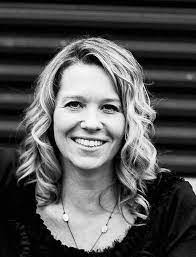By Roger Barbee
Every few days, a new photograph appears on my computer sent by some server I signed with years ago. As far as I know, the service is free, and I do enjoy looking at the stunning photographs of the natural world—I decline ones of cities. The photographs of mountains, lakes, shorelines, all the usual natural views are terrific. Sometimes people are present in them, but they are secondary to the magnificent scenery. I enjoy guessing the location of the photos and have come to understand that there is, at times, little difference between a mountain view in the United Kingdom to one in France. Over the years I have learned that our world is not that different from one location to another. Now, I appreciate that The Sarah Desert and Death Valley are two different deserts with their own ecology, but even the differences do not discount how much alike our earth is in its varied locations. A field of wildflowers in Germany often resemble one in America. It seems that we are, in the natural world at least, more alike than different.
Over thirty years ago, on February 14, 1990, NASA engineers turned the cameras of Voyager I toward our solar system just as it was to exit it on its way to explore other solar systems. Voyager I was 3.7 billion miles from our sun when its cameras took sixty photographs of our solar system and one picture became known as the Pale Blue Dot because of a pixel sized dot sitting in a bent ray of sunlight. Scientist Carl Sagan used that image in the title of his book, Pale Blue Dot: A Vision of the Human Future in Space, in which he writes, “Look again at that dot. That’s here. That’s home. That’s us.”
Looking at that pixel recently on my computer screen caused me to close that screen and go to the most recent photograph sent to me by the unknown provider which was of a lake with mountains in the distance. In the clear and shallow water of the foreground can be seen smooth stones and on ragged, peaked mountains are evergreens that eventually thin out and gave way to bare rock. The jagged peaks look like they could be in the Rocky Mountains, but they are in Germany. (Wrong again on knowing where a photograph is taken). But being wrong about any location of a nature scene, does not upset me, and I still marvel that so many physical areas of our earth closely resemble other locations. Despite differences, it is the earth on which all of mankind lives and much alike across its rivers, lakes, mountains, deserts, forests, and more.
The KJV of The Letter to the Hebrews has in 2:7, “Thou madest him [man] a little lower than the angels; thou crownedst him with glory and honour, and didst set him over the works of thy hand:” I understand that to mean we are the stewards of this earth, and that is a task that we seem to have chosen to forget or ignore the responsibility for a myriad of excuses.
But I ask the reader to go to the computer and type in Voyager I and look at Sagan’s pale, blue dot that looks so small and isolated and alone in that beam of sunlight. But after looking at the pixel-sized dot, remember his words: “…That’s here. That’s home. That’s us.” It is all we have, so we should take care of it, that pale, blue dot.







